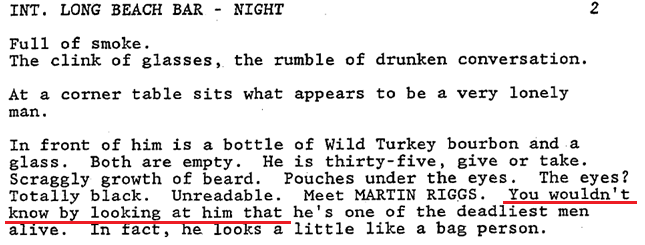The way you introduce your screenplay’s main character is very important, for it is a piece of descriptive writing in which you are allowed to indulge in narration ― being creative with words, without worrying about writing only what one can see on the screen, without worrying about being absolutely concise.
Make the introduction memorable, make it original, make it “cracking.” Because ― they say ― sometimes the character’s introduction is the only part of your script a star will read when considering whether to hop aboard the project. Therefore it is where you have your best chance to convince them that the role you have prepared is intriguing enough for them to play.
I have noticed that, to this purpose, introductions often use a peculiar “format.” I call it the “frame VS frame” format. It consists of making the reader see the character through a certain mental frame: suggesting an initial idea of the kind of person s/he is (a stereotype, an archetype, a social or psychological type), then continuing by suggesting that not everything fits that initial idea, thus introducing a new, and maybe opposite, idea.
It is a “but” that is often expressed by directly addressing the reader: “You wouldn’t guess it, but…”
Sometimes the “frame VS frame” structure is effective in giving a hint about deep conflict inside the character, offering a foreshadowing of the drama to come. Sometimes it is just a way to “cheat” ― giving the reader character information that otherwise would be impossible to inject so soon into the story. In any case, the format is always intended to promise a complex and engaging character.
Here are three examples, taken from The West Wing, As Good As It Gets and Lethal Weapon. I have underlined the key passages in the “frame VS frame” format, i.e., the “but.” Enjoy:





Be First to Comment